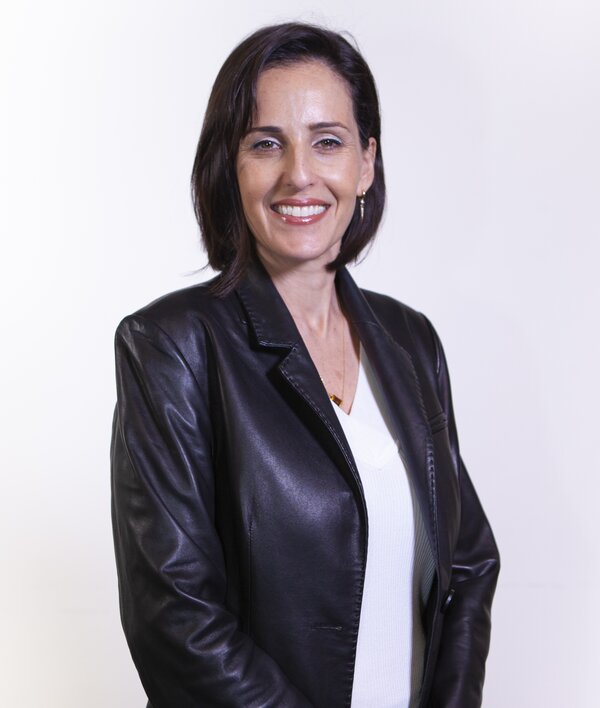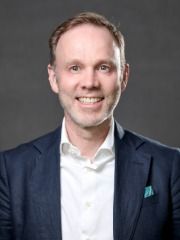Publications Hub, EuroPerio, Treatment, Article
How to push the limits of regeneration in complex cases
14 April 2025
Taking regeneration of hard and soft tissues to the limit is about more than learning new techniques—surgeons need to understand treatment risks, carry out careful diagnostics, and reduce the stress factors for both the patient and the dentist. At EuroPerio11, four master clinicians will explain how they approach their patients’ needs and their decision-making processes. Session moderators Tali Chackartchi and Ronald Jung explain the importance of a comprehensive case analysis, a diagnosis that address both patient- and site-specific factors, and strategic treatment planning based around understanding the clinical variables.
In periodontal and implant dentistry, successful regenerative outcomes do not depend solely on advanced techniques. Achieving predictable and optimal results requires a systematic and structured approach to case analysis, incorporating comprehensive diagnosis, evidence-based treatment planning, and an in-depth understanding of patient- and site-specific factors. By methodically deconstructing clinical challenges, clinicians can optimize outcomes and mitigate complications through targeted and phased interventions.
Before selecting a treatment approach, it is essential to meticulously investigate each case’s complexity and associated challenges. This involves breaking down the case into its fundamental components to identify anatomical, biological, and mechanical limitations.
As Daniel Kahneman, winner of the Nobel Prize in Economics, describes in Thinking, Fast and Slow[1], expert decision-making in complex situations relies on deliberate, analytical thinking. This cognitive approach allows clinicians to go beyond intuitive judgments, facilitating a structured evaluation of treatment alternatives and potential complications. By employing a methodical, data-driven approach, practitioners can refine decision-making processes, leading to more predictable regenerative outcomes.
Comprehensive diagnosis: patient and site-specific considerations
Accurate diagnosis is the cornerstone of regenerative success. A thorough assessment must integrate both patient-related and site-specific parameters:
- Patient-level considerations:
- Systemic conditions such as uncontrolled diabetes mellitus, cardiovascular disease, and smoking significantly influence periodontal and bone healing, altering regenerative potential.
- The patient’s adherence to oral hygiene and long-term maintenance is critical for ensuring the stability of regenerative outcomes. Poor compliance has been directly linked to increased failure rates in periodontal and implant therapies.
- Psychosocial factors, including patient expectations and treatment-related stress, play a crucial role in determining therapeutic success and should be proactively addressed.
- Site-specific considerations:
- The quality, quantity, and integrity of soft and hard tissues in the affected area directly affect the feasibility of regenerative procedures.
- The presence of keratinized gingiva has been correlated with long-term peri-implant health and regenerative success.
- The morphology of the defect (e.g., horizontal vs. vertical bone loss, presence of intrabony defects) dictates the choice of biomaterials and surgical techniques to be implemented.
- Adjacent anatomical structures, including interproximal bone levels and soft-tissue architecture, influence regenerative capacity and the ability to restore the original tissue morphology.
Analysis of clinical parameters and strategic treatment planning
Understanding the impact of specific clinical variables is essential for optimizing regenerative outcomes. Treatment planning should be structured around the following considerations:
- Influence of defect morphology on healing outcomes:
- The three-dimensional architecture of periodontal and peri-implant defects significantly determines the potential for regeneration.
- Well-contained three-wall intrabony defects typically exhibit greater regenerative potential compared to non-contained one-wall or horizontal defects.
- The absence of interproximal bone support adjacent to the defect may limit full restoration of the original soft-tissue contour, necessitating adjunctive measures.
- Phased and multi-stage interventions:
- In complex cases, a single surgical intervention may not be sufficient to achieve the desired outcome.
- Sequential preconditioning procedures—such as soft-tissue augmentation prior to bone grafting—can improve the local environment and enhance regenerative success.
- Staged bone augmentation, combined with guided bone regeneration (GBR) techniques, may be required in cases of severe ridge deficiencies.

Four experts discuss their structured approaches
These fundamental principles and their clinical application will be explored at the EFP-Osteology Foundation joint session, “Pushing the limits in regeneration,” at EuroPerio11 in Vienna, where four experts will discuss structured approaches to case analysis and decision-making in regenerative therapies for soft and hard tissues.
- Isabella Rocchietta (Milan, Italy)will address the fundamental importance of evaluating all aspects as a whole—ranging from local factors to the human factors involved— to achieve a successful outcome. She will discuss how comprehensive case analysis mitigates treatment-related stress. She says that she hopes the session will show the true aspect of ourselves as the weakest link in the process when treating complex cases in GBR.
- Istvan Urban (Budapest, Hungary) will explore minimally invasive techniques for reducing risk in complex cases involving severe hard-tissue deficiencies. In this session attendees will learn how to diagnose, plan, and predictably treat major vertical bone and soft-tissue defects with less-invasive surgical procedures that do not involve the need for invasive autogenous bone-block harvesting procedures and that involve less-invasive soft-tissue grafting techniques with excellent aesthetic outcomes.
- Giovanni Zucchelli (Bologna, Italy) will present the approach of an expert clinician in the treatment planning of complex cases. He will illustrate the possibilities and limitations of soft-tissue augmentation procedures, with the aim of clarifying the role of bone and soft tissues in achieving a successful outcome, both functionally and aesthetically.
- Otto Zuhr (Munich, Germany)will provide insights into streamlining professional practice for managing highly complex cases and soft-tissue complications. He will provide insights into how to streamline practice to avoid treatment failures in connection with soft-tissue regeneration in complex cases. He expects that, after attending this session, participants will better understand that success in regenerating soft-tissue defects in the oral cavity is multifaceted and requires the consideration of a variety of variables in treatment planning to minimize the risk of failures.
This session offers a unique opportunity to gain a deeper understanding of how master clinicians systematically analyse cases to simplify treatment execution, enhance predictability, and minimize potential complications and how to break down complex scenarios into manageable steps.
[1] Daniel Kahneman, Thinking Fast and Slow (New York: Farrar, Straus and Giroux, 2011).
Biographies

Tali Chackartchi graduated from the Faculty of Dental Medicine at the Hebrew University of Jerusalem in 2002 and completed her post-graduate specialization in periodontology at the Department of Periodontology, Hadassah Medical Center & Hebrew University in 2008, where she also began her role as a clinical instructor. In 2009, she achieved European Federation of Periodontology (EFP) accreditation as a specialist in periodontology and graduated from the implant reconstructive dentistry program at the G. Niznick Oral Implant Center. Dr. Chackartchi was awarded a two-year scholarship from the Staub Family Fund for perio-prosthesis scholars. Her research interests include the biological and clinical implications of combined orthodontic-periodontal treatments and the integration of digital tools in implant dentistry. She serves as a member of the EFP's execuitive committee and the experts council of the Osteology Foundation. A past president of the Israeli Society of Periodontology and Osseointegration, Dr Chackartchi currently practices in her private clinic in Tel Aviv, focusing on periodontology and implant dentistry.

Ronald E. Jung is the chair and clinic director of the Clinic of Reconstructive Dentistry at the Center of Dental Medicine, University of Zürich, Switzerland. He received his PhD from the University of Amsterdam, ACTA dental school, in The Netherlands in 2011. In 2013 he worked as visiting associate professor at the Department of Restorative Dentistry and Biomaterials Sciences at Harvard School of Dental Medicine in Boston, USA. He is an accomplished and internationally renowned lecturer and researcher, best known for his work in the field of hard- and soft-tissue management and his research on new technologies in implant dentistry. He is currently the president of the European Association for Osseointegration (EAO), president-elect of the International Team for Implantology (ITI), past president of the Swiss Society of Reconstructive Dentistry, and a member of the board of directors of the Osteology Foundation.
EFP-Osteology Foundation joint session: Pushing the limits in regeneration | Vienna | Thursday 15 May, 10.30-12.00
EuroPerio11 | Vienna | 14-17 May: Information and Registration




